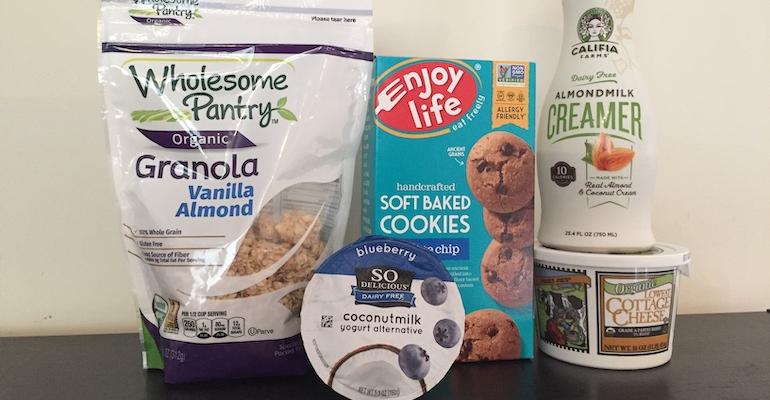When grocery shopping in-store or online, 81% of consumers deem transparency important or extremely important for the products they buy, new research from FMI-The Food Industry Association and Label Insight finds.
Of 1,000 U.S. omnichannel shoppers polled, only 4% don’t consider product transparency important, according to the FMI-Label Insight “Transparency Trends: Omnichannel Grocery Shopping from the Consumer Perspective” report, released Tuesday. More affluent and higher-spending respondents — including those with higher household incomes and people who shop online more often — tend to value transparency more strongly, FMI said.
The study, conducted March 5 to 20, surveyed consumers who had shopped online and in-store for groceries within the previous month. FMI noted that the report builds on 2018 research that examined the rising importance of transparency. (Charts from FMI-Label Insight 2020 "Transparency Trends" study)
In determining the transparency of a brand or manufacturer, shoppers weigh such factors as ingredients, certifications, nutrition and sustainability. To that end, 62% of those surveyed consider brands and manufacturers transparent if they provide a full list of ingredients, and 53% expect a plain English description of ingredients. Customers also seek more detailed ingredient information, including sourcing detail (38%) and an explanation of ingredient use (32%).

Nearly half of respondents (48%) think certifications, such as “USDA organic,” and in-depth nutritional information (47%) show that a brand or manufacturer is being transparent. Some customers also look for information on allergens (35%) or product claims such as “heart healthy” (29%). Other information sought by shoppers includes how products are produced (39%); values-based information like treatment of animals, fair trade and labor practices (35%); and sustainability practices (29%).
“It’s one thing to know consumers want transparency; it’s another thing to act on it. We’re seeing more and more that providing detailed product information is key to building trust and loyalty with consumers,” commented Tim Whiting, vice president of marketing at Chicago-based Label Insight, which partners with retailers and suppliers to improve product information and transparency. “Moving forward, brands will need to continue to listen better to their customers, continuously update their online and in-store content to keep pace with changing consumer preferences, and be an open book when it comes to their products so that they can maintain and grow market share.”
A big reason that retailers and brands must heighten product transparency is high consumer distrust. FMI and Label Insight found that 61% of omnichannel shoppers think manufacturers, brands or government institutions are completely responsible for providing detailed product information. At the same time, though, less than half of these customers fully trust product information from manufacturers and brands (41%) and from government institutions (46%).
In terms of trust, shoppers generally don’t distinguish between brick-and-mortar stores (93% trust product information and online grocers (93%). Still, they see online grocery retailers as more responsible (42%) for providing full product details than brick-and-mortar grocers (35%).
Transparency expectations for online grocers are higher, in part, because consumers tend to go online to get more information on a product. Of respondents, 47% said they will research ingredients online in the face of confusion, while 89% reported they would be more likely to seek details on a product if it had more online information.

Younger shoppers are more apt to look for more product information. The study found that 96% of Millennials would be at least somewhat likely to seek more details online, with 57% being very likely. Generation X shoppers also show a high propensity (49% very likely) to seek more information online, while Baby Boomers (37%) and Generation Z (41%) shoppers are less likely to do so.
Brands and manufacturers not providing clear, detailed product information may find consumers looking elsewhere. FMI said 46% shoppers confused about ingredients will look at another product to see if they understand the ingredients better, and 27% will switch to another product.
“Pre-pandemic, online shoppers expressed a desire for expanded features that would enable search capabilities, exploration and better ways to compare products,” according to Doug Baker, vice president of industry relations at FMI. “The analysis helps food retailers prioritize how consumers want to engage with them and their brands in an authentic way.”
Changing customers needs have fueled demand for more product transparency, FMI and Label Insight noted. The 2020 research found that more shoppers are following a diet or health-related eating program (64%) than in the 2018 study (49%). Similarly, their shopping behaviors are more affected food allergies, intolerances or sensitivities, with 55% indicating so in the 2020 study versus 44% in 2018.
Consumers likely to seek more product detail are most interested in ingredients, including ingredient definitions (42%), sourcing of ingredients (39%) and production of ingredients (36%), the 2020 report said. Many also seek more in-depth information on nutrition (39%) and allergens (17%).





